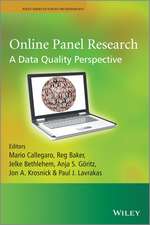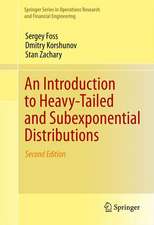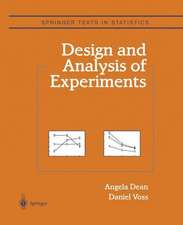Introduction to Linear Models and Statistical Inference
Autor SJ Jankeen Limba Engleză Hardback – 11 aug 2005
Preț: 1050.65 lei
Preț vechi: 1154.56 lei
-9% Nou
Puncte Express: 1576
Preț estimativ în valută:
201.05€ • 210.87$ • 167.36£
201.05€ • 210.87$ • 167.36£
Carte tipărită la comandă
Livrare economică 01-15 aprilie
Preluare comenzi: 021 569.72.76
Specificații
ISBN-13: 9780471662594
ISBN-10: 0471662593
Pagini: 600
Dimensiuni: 173 x 241 x 37 mm
Greutate: 0.94 kg
Editura: Wiley
Locul publicării:Hoboken, United States
ISBN-10: 0471662593
Pagini: 600
Dimensiuni: 173 x 241 x 37 mm
Greutate: 0.94 kg
Editura: Wiley
Locul publicării:Hoboken, United States
Public țintă
For students of linear models either at the upper undergraduate or beginning graduate level; for applied statisticians that need a review of the subject matter; for academic libraries.Cuprins
Introduction: Statistical Questions.
1. Data: Plots and Location.
2. Data: Dispersion and Correlation.
3. Random Variables: Probability and Density.
4. Random Variables: Expectation and Variance.
5. Statistical Inference.
6. Simple Linear Models.
7. Linear Model Diagnostics.
8. Linear Models: Two Independent Variables.
9. Linear Models: Several Independent Variables.
10. Model Building.
11. Extended Linear Models.
Appendix A: Data References.
Appendix B: MINITAB Reference.
Appendix C: Introduction to Linear Algebra.
Appendix D: Statistical Tables.
References.
Index.
Descriere
A multidisciplinary approach that emphasizes learning by analyzing real-world data sets This book is the result of the authors' hands-on classroom experience and is tailored to reflect how students best learn to analyze linear relationships. The text begins with the introduction of four simple examples of actual data sets.











